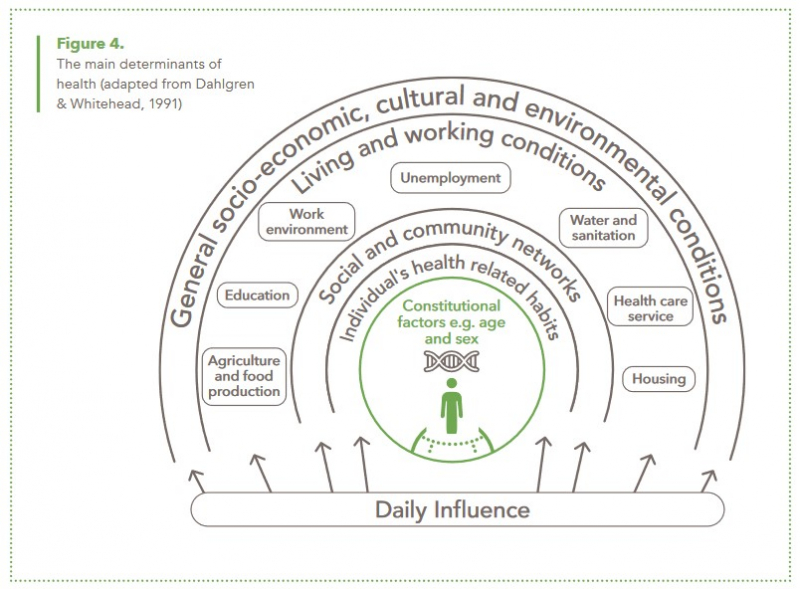The social determinants of health are the conditions in which people are live, love, learn, work, and play1.
These circumstances are shaped by the distribution of money, power, and resources at a global, national, and local level.
The model described by Dahlgren and Whitehead emphasizes that health involves the complexity of the whole person as well as the environment. As health is created in a wide variety of conditions, actions to improve and sustain health should include these places/settings e.g. schools, workplaces, hospitals, and cities.
This conceptualization shaped the “settings approach” to health promotion, of which the ‘Health Promoting Schools’ initiative is one example. The school policies and practices that prioritize this model address not only individual students’ knowledge and understanding related to health, but also the structural determinants of health at school and/or local community level. The settings approach creates opportunities for students to be agents of change at school and/or community level.
The social determinants of health are mostly responsible for the unfair and avoidable differences in health (health inequities) seen within and between countries.

1 World Health Organization. The Ottawa Charter for Health Promotion. Geneva, Switzerland: WHO; 1986 Available from: http://www.who.int/healthpromotion/conferences/previous/ottawa/en/index.html
